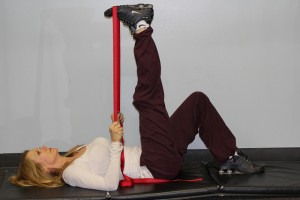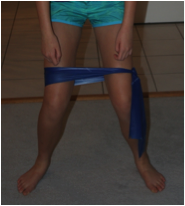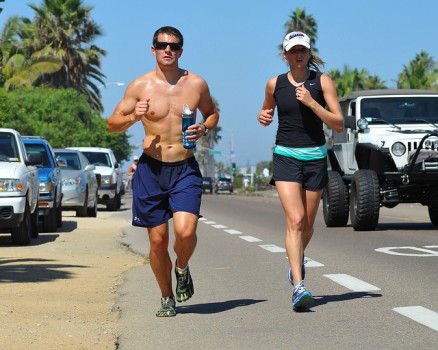This is a guest post by Jessica Rosevear Fox. Read our interview with her here.
I’ve been a lifelong Francophile, and two years ago, my Provence-themed wedding led to a French honeymoon. After spending a few days in Paris, my husband and I headed down to Provence, where we spent our time in lavender fields, strolling down tiny village streets, and exploring the rustic countryside.
I bought a book while I was there–I thought it was French chick lit, but it ended up being a French translation of an British novel. Titled Tout ton portrait and written by Isabel Wolff, it told the story of a portrait artist and her family relationships. The character’s mother was a former ballerina who retired after an injury. I hadn’t thought about ballet in years, and I had a moment when I thought–Oh yeah–ballet. That’s a thing.
The idea of ballet stuck with me, and when we got back to the States, I dove into the Internet for more. I’d taken ballet for a few years as a kid but was never serious about it. Now, as an adult, I became much more interested in the art form. I found beautiful ballet images on Pinterest, technique and documentary-style videos on YouTube, and helpful information in online communities like the Adult Ballerina Project and Ballerinas by Night. After engaging with ballet at a distance for a few months, I finally took the plunge and started taking adult ballet classes at a wonderful studio nearby. After a year, I advanced to pointe. I absolutely love it!
I’m also a writer. I typically do one major writing project each summer, and I knew last summer that I wanted my project to have elements of Provence and elements of ballet. They were both areas of my life in which I wanted to spend time, even if just in my imagination. That writing project became “After the Ballet,” a short story that I published through my indie imprint, Killing the Angel Press, an extension of the literary magazine I run.
“After the Ballet” was the first time I started writing from a sensory point of departure–the buzz of cicadas, the scent of the lavender in its endless purple lines, shiny pink pointe shoes. I’d been learning about the career trajectories of professional ballet dancers and found it fascinating. What really interested me was the fact that some dancers advance so quickly from the corps de ballet, to being a soloist, to being a principal dancer, while others take a very long time. Others don’t advance beyond the corps de ballet. Nothing is guaranteed. I became interested in the question of what would happen if someone decided to leave that world behind for something new after a lifetime of singular focus. I also wanted to pair that character with a sister experiencing changes of a more domestic nature. The idea of facing change against the backdrop of a lavender farm in Provence really inspired me. It was a world I just wanted to hang out in for a while. In the meantime, the theme of the story grew beyond the external details into one that might be more universal, something many different people could recognize.
A few people who read the story told me they could see it becoming a full-length novel. I think I agree, and so I’m looking forward to this summer’s writing project!
 Ballet saved me. Dance was medicine when nothing else was working.
Ballet saved me. Dance was medicine when nothing else was working.

































